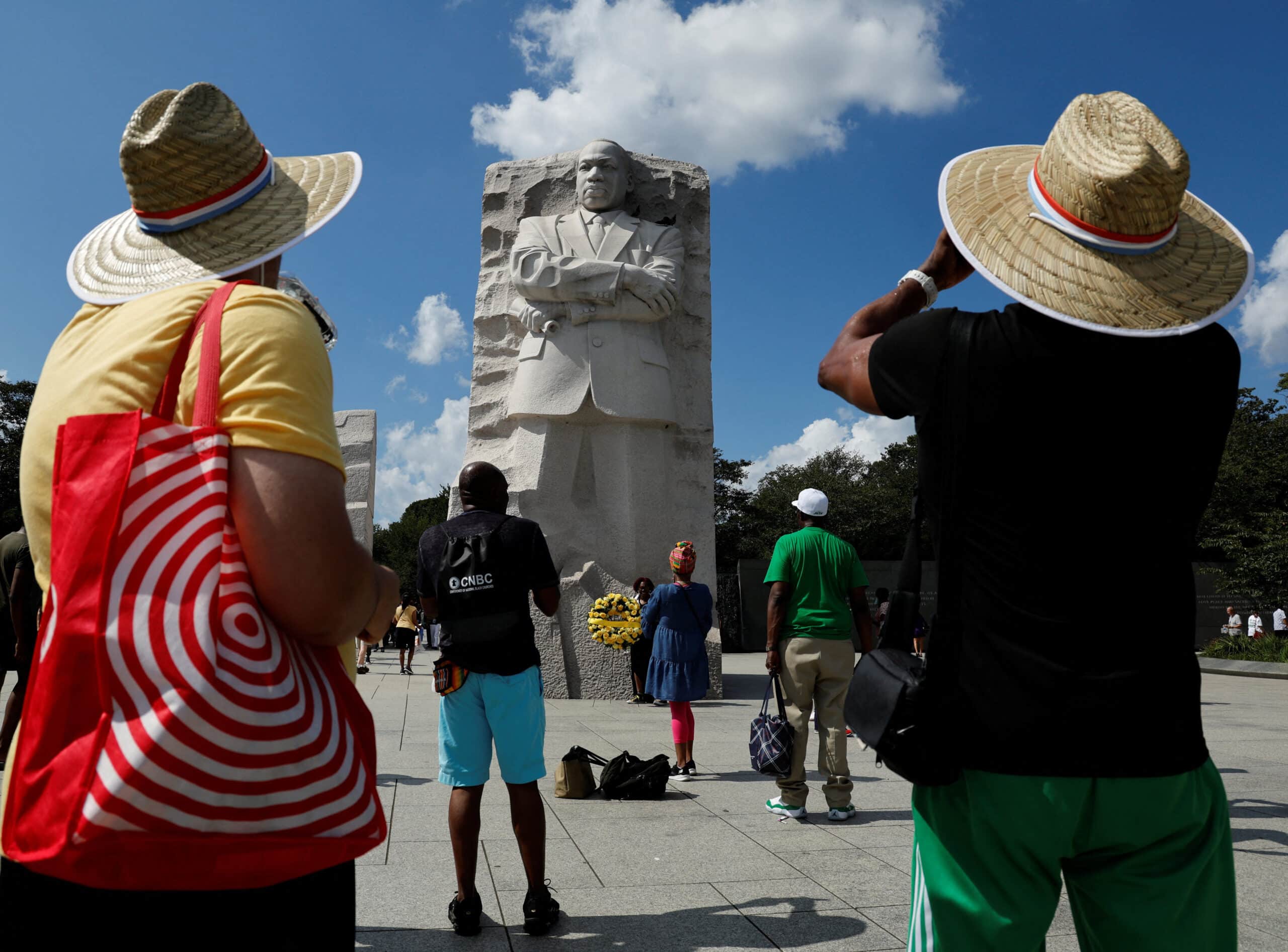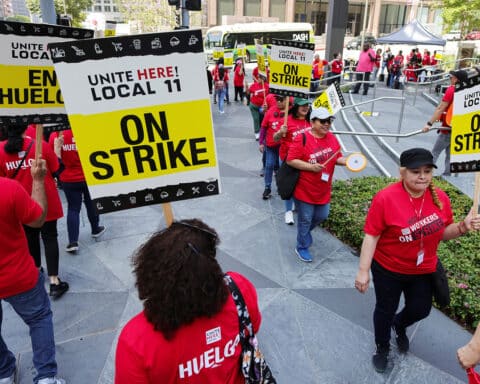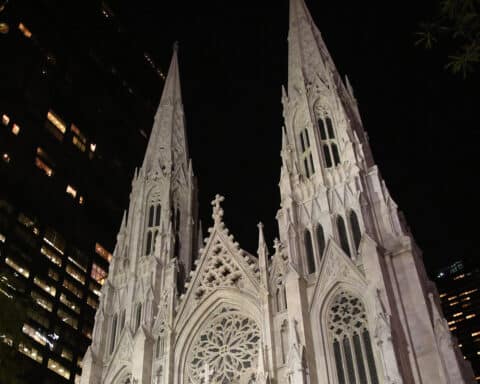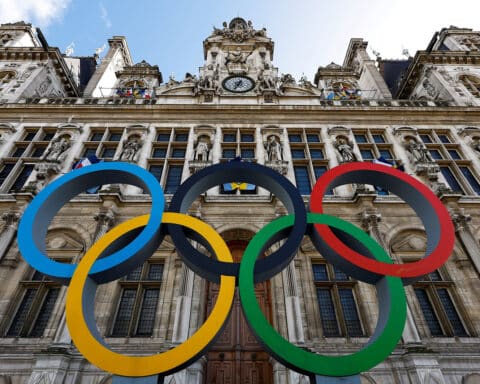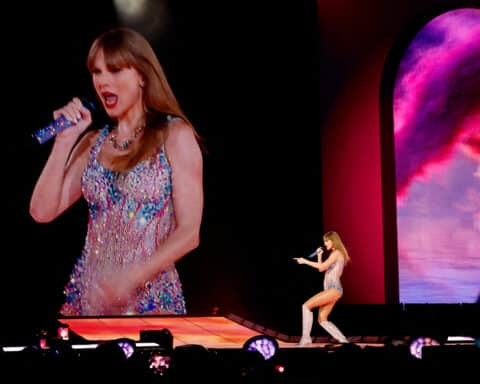WASHINGTON (OSV News) — In the summer of 1963, Suzanne Chandler was 16 and had been looking for a part-time job in the nation’s capital, where she grew up as a member of Our Lady of Perpetual Help Parish.
Then she heard that on Aug. 28, there would be a March on Washington for Jobs and Freedom promoting job opportunities and equality for Black Americans, so she decided to join the rally.
“I caught the bus and went down there. When I got there, it was like nothing I had ever seen before. There were so many people, Black and white, everyone was getting along and greeting each other. When they were singing songs, people were holding hands,” recalled Chandler, now 76.
She was in the crowd far back from the Lincoln Memorial near the Reflecting Pool and didn’t get any job leads that day, but “when I left, I was so inspired.”
“Fast forward a year later, I was job hunting,” Chandler said. The 17-year-old happened to be at a bus stop right next to the U.S. Department of Justice and decided to go inside and apply for a job there. “I was hired that day. … I could not believe it. Then I found out my appointment was with the Civil Rights Division. I was speechless!”
Chandler, who worked for many years in that division of the U.S. Department of Justice as a clerk and stenographer, said, “I couldn’t help but think when I got that job, everything came full circle. That was my first job, other than babysitting.”
In 1965, she married Richard Chandler. The next year, she became a longtime member of St. Thomas More Parish in Washington, where over the years she served as an extraordinary minister of holy Communion and continues to help out at the food pantry. She and her husband of 58 years have three children and five grandchildren and one great-grandchild.
Suzanne Chandler, who later worked as a secretary and retired as a computer systems analyst for the U.S. Postal Service, said the March on Washington 60 years ago “was part of my beginning. It was just an experience that helped me grow.”
Seeing so many people of different races there getting along changed her perceptions, she added. “My thought has been since the march, (that) we were all the same. … That still comes to mind how everybody came together. Today we can still do that.”
Challenges, like the racial divide, still exist but her experience at the 1963 march makes her feel that “we can still overcome that. It still makes me hopeful,” she told the Catholic Standard, newspaper of the Washington Archdiocese.
Divided over race
The future Father Raymond Kemp was among a group of about 12-15 seminarians of the Archdiocese of Washington who assembled at the chancery building next to St. Matthew’s Cathedral to head to the 1963 march.
Ordained to the priesthood in 1967, Father Kemp now serves at Georgetown University as the special assistant for community engagement in the office of the president there.
The seminarians had been encouraged to join the march by Msgr. Martin Christopher, director of vocations for men at the time.
“I grew up in segregated Washington, D.C.,” said Father Kemp, whose father worked for the Chesapeake and Potomac Telephone Co., and whose mother had earned a business law degree and worked for the U.S. Maritime Commission. “I knew the country was completely segregated, and I knew it was totally wrong,” the priest, who is white, told the Catholic Standard ahead of the 60th anniversary of the march.
“The thing that grabbed me about the march itself was how people were there, (of) different races, different ages,” he said, adding that many people in the crowd wore their Sunday best, and the mood was “upbeat and buoyant.”
“Buses came from everywhere, people came from everywhere,” he said, adding that hearing the music and the speakers “just lifted our soul.”
Father Kemp said that he and the other seminarians got there in time to hear Washington Archbishop Patrick O’Boyle give the invocation. Later that day, the Rev. Dr. Martin Luther King, a Baptist minister, gave his famous “I Have a Dream” speech. Another speaker was Rev. Eugene Carson Blake, a Presbyterian Church leader who later served as president of the National Council of Churches.
“The churches were united,” Father Kemp said, noting how St. John XXIII had been emphasizing the importance of ecumenism during his pontificate, “and this was being played out right in front of my eyes” at the March on Washington.
The priest said he knew how deeply divided the country was over race at the time, and “how this (the march) was the complete opposite of that. We were together. … What carried me that day was how great it was that people could come together for a common cause, and they could do it in the name of God, and they could do it in the name of the common good, and they could do it in the name of the Constitution.”
Sixty years later “what’s pretty clear is that racism, ignorance and fear are still with us,” Father Kemp said. “A lot of folks don’t want to talk about white people buying and selling and renting persons. I think the legacy of slavery and racism is manifest in this country when you see crimes of hate and vengeance, and it’s never been clearer that what we need are the voices of churches and workers and owners of companies and students and educators to get involved in creating a just and equal society.”
Crowds at the march
Like many residents of the nation’s capital, Alverta Munlyn walked to the March on Washington on Aug. 28, 1963.
“I didn’t live too far from the (Lincoln) Memorial,” said Munlyn, now 81.
The lifelong member of Holy Redeemer Parish in Washington said she especially remembers “the crowds and crowds of people” that day. “We were fighting for jobs, housing and education,” she said.
Munlyn noted how community members, local clergy and groups like the Urban League worked together to continue the work of the march, as housing developments for low-income and working-class families were built in her neighborhood, and tutoring programs were established with volunteers from Georgetown University and Gonzaga College High School.
“Some of the things we wanted to see happen, happened,” she said.
Sheila Dunn, now 73, was a 13-year-old student at Jefferson Junior High School in Southwest Washington when she joined fellow members of the New York Avenue Presbyterian Church in marching together to join the march.
“We got pretty close” to the Lincoln Memorial where Dr. King spoke, recalled Dunn, who became a Catholic three years ago at the Easter Vigil at St. Thomas More Church in Washington,. “I remember the whole speech. I never saw so many people in my life. The Reflecting Pool, one end to the other, was a mass of people.”
Shortly before the march, Dr. King had visited an elementary school in Southeast Washington where Dunn lived, and she said parents and children had gathered there to see him. “I shook his hand,” she said.
Remembering his words at the March on Washington, she said, “He was a powerful speaker. Everyone was enthralled with how he spoke. … Martin Luther King, he stood for nonviolence. I’ll always remember it.”
Over the years, Dunn worked as a security officer for AT&T, the Computer Sciences Corp. and later at NASA’s Goddard Space Flight Center in Greenbelt, Maryland. She and her husband, Bobby, had three children. He died about 15 years ago. She also has two grandchildren.
Sixty years after the march, “we’re still fighting for the same thing,” Dunn said. She pointed to continuing challenges such as equal rights, helping the poor and expanding job opportunities, and she added, “All these things are the same things we were fighting for before.”
‘Dr. King’s dream is still alive’
In his column for the Catholic Standard, Cardinal Wilton D. Gregory of Washington said that 60 years after the march, “Dr. King’s dream is still alive” but “many of the challenges” contained Dr. King’s iconic “I Have a Dream Speech” are “as yet not completely fulfilled,” he wrote.
“We Americans have made noteworthy progress in the areas of social justice. People of Color have since attained positions of authority unimagined in 1963. Still too many Americans, however, await the realization of the dream referenced in Dr. King’s speech,” Cardinal Gregory said. “Far too many people in this great nation do not feel comfortable with each other across races, economic classes, religions, political affiliation, language or sexual orientation. … Sadly, each day the broadcast news and social media platforms confirm just how far we have to go to bring that dream to fulfillment.”
“Today’s young people, in a special way, need to recapture the hope that was electric during the March on Washington in 1963,” said the prelate, the first African-American cardinal.
“The great men and women of every race, culture and creed who came to stand before the Lincoln Memorial 60 years ago deserve our allegiance to the principles that inspired them — and can and should inspire us as well. His dream is still alive!”
Mark Zimmermann is editor of the Catholic Standard, newspaper of the Archdiocese of Washington.

